To admire the beauty of flowering ornamental plants on its summer cottage or local territory, you can three seasons in a row. And this is not a myth, but just a competently equipped flower garden. If there is a free piece of earth on it, it is possible to plant a wide variety of plants that will delight the eye of the buoy from the first warm spring rays of the Sun and to the first frosts. Showing a little fantasy, taking advantage of our advice, you can create a decorative flower garden on unique design with your own hands.
Content
Flower bed.
As part of a composition of decorative plants, which filled their flower beds, can be both perennial and annual herbaceous types of plants, small shrubs and trees, decorative sculptures, original illumination and pebbles. In addition, in the streets you can see garden flower beds of absolutely different shapes and content. The most common option is a classic flower bed in which plants are distributed from the middle to the edges, from high flowers to lower.
When placing flower beds with your own hands, flowers are given the opportunity to show the maximum of their creative abilities. And it does not have to be round, if desired, the flower bed design can be invented by its individual design scheme, not similar to others. Flower flower bed can have a square and rectangular shape, symmetrical and asymmetric, be made in the form of a certain thematic pattern or even paintings. Flowers in the original version you can see in the photo.
At the exhibitions of landscape design, there are often flower beds that differ in color schemes and topics, as well as made using one particular type of plants. The appropriate composition of the composition is sculptures, decorative stone and multi-colored sawdust. Unusual in its performance is a seasonal flower bed with plants blooming at the same time. For example, Spring Flowerba, where bulbous flowers are planted: tulips, hyacinths, daffodils. However, such a flowerba pleases with its flowering about 2 weeks.
When making summer flower beds, your fantasy will have more opportunities for creativity, since the blooming summer plants there is a huge set. Of these, you can form an ideal composition. The decoration of the site for all three autumn months is a flower garden with petunias, dahlias, zinc and so on. The ideal option will be the creation of a double flowering flowering flowering, on which you can pick up and connect flowers, replacing each other in flowering season for the season, changing, so your appearance.
The flower palette is so diverse, which allows the master to choose the most unusual and beautiful plants for his flower beds. The overall style of the garden or the court area, the duration of flowering plants, their biological features, growth rates and compatibility with the rest of the plants are taken into account.
Colon `flow chases can be the most different, individually. As an option, we propose to take note of the following plant location scheme in a flower bed:
This is a flower garden, as they say, for lazy, as it does not need constant care. The plants in it are chosen in such a way that, firstly, minimize the chances of the appearance of weeds, and secondly, the compositions are involved in the composition green and color-resistant flowers. The peak of decorativeness and flowering of such a flower beds falls in mid-July. This flower garden uses:
- White terry peony.
- Clematis.
- (3,4,5) - three types of flusted florals ("traces", "Swedish", "Maria").
- Pink blink.
- Host Foune.
- Line lemon color.
- Clopogon.
- direct Clematis.
Preparatory work:
- Before starting the creation of flower beds, it is necessary to determine the choice of colors gamma, which will prevail on your site. It is important that they are combined with each other and created a single composition. To solve this issue, it is necessary to approach responsibly, pick up colors with taste, otherwise as a result you risk obtaining just overgrown with the distrect shades.
- Plant selection. On one flower bed, you can limit the two-three types of colors. In this case, it is important that plants be comfortable to be with each other on one flowerbed.
- The third equally important question concerns the definition of a geometric form of a flower bed. It is necessary to think over the approximate scheme of flower beds in advance, refer to the plants distribution on it, their flowering period. Savvy gardeners have flowers in this order, to on-site blossomed others withered.
- Geometric calculations flower bed to anything, it is important to take into account only the period of flowering and plant compatibility.
Types of plants for flower bed
At present, florists breeders invented an incredible number of new varieties of flowering plants. Some - thermophilic and requires only ambient conditions, while others - more resistant, suitable for outdoor decoration of land plots and flowerbeds. In landscape design distinguish the main colors of traditional flower gardens: red, yellow, blue, green. Considered neutral white and silver shades:
- Perennials provide a stable color over several years. In early spring, the first shoots emerge from the soil in summer there is an active flowering and reproduction, and the autumn colors dry. Types of perennials:
- pillow. It is predominantly low-spirited plants that have stalks on the ground and almost completely covers it. The feature of the pillow is a great power of growth. These include: Barwin, Obritis, Arabist, White Card, Shilovoid Flox, Sagin, Yaskolka, Stakhis;
- herbatous plants, with modified underground stems are called rhizons. These include the colors of the hosts, thefts, Lilynik, Iris, Lily Sisha, Cannes, Badan and others;
- bulbous. Common decorative plants, such as: Tulip, Narcissus, Lily, Hyacinth;
- clubneelukovichny - Gladiolus, cyclamen;
- meltelukovic - prolesta, Muskar, Snowdrop, Crocus.
- Annual. Such plants are grown in flower beds during the period of one season, that is, a flower is planted at the beginning of summer, flows down, its seeds are going, and the next year is planted again. Some annuals are characterized by a long period of flowering - from the beginning of summer and to the first frosts in the autumn on the ground.
There is a separate group of annual and perennial plants, the cultivation of which is carried out as for annual cultures. This is Ageratum, Petunia, Verbena, Statiza, Kobei, Lobelia, and so on. Perennial plants that are not blooming in the first year after disembarkation, also enter this group: centraria, Santolina, Cabbage decorative, Koleus. This annuals, in turn, are divided into thermal-loving and cold-resistant, moisture and resistant drought, shadowish and requiring the maximum amount of light.
When choosing a plant for a flower bed, it is important to consider the following points:
- do not combine plants in agrotechnical and environmental requirements;
- choose plants corresponding to each other in shape and color;
- it is also necessary to take into account the strength and nature of growth;
- it is impossible to plant old plants, and affected by infection.
Types and shapes of flower beds
Competent decoration of flower beds today is a profitable and stable income of landscape designers. Great talent and fantasy requires the arrangement of the country area in compliance with the rules of the combination of colors during the selection of plants. Over the course of decades, florists have developed and embodied a variety of types of flowes, the most common of them are:
- mixed border. It has an improperly elongated shape and blooms continuously. Ideal for registration of living ingredients, blooming shrubs, evergreen ornamental plants. This form of a flower garden looks good from all sides. Such a mixture is ideal when designing landscape planning in the garden. Mix of flowers, shrubs and trees forms a single picture with bright stains. At the front edge, as a rule, annual and bully plants are planted;
- a border of about 65 cm wide is an oblong flower garden consisting of low-layer plants. Often, the floral curb can be found in those places where the gardener tried to emphasize or distinguish one of the garden zones. The border is placed in the parks, near the memorial complexes, along the pedestrian paths. For the most part, the border consists of perennial plants;
- a long ribbon with a flower mix along the tracks is called the Rabata. The standard flower bed width is 50 cm, but some gardeners increase the size of the pea to 3 meters. Length is determined individually. Such flower beds are divided into one-sided, which are located along houses and tracks, and double-sided - those who find their place in the middle of the alleys and are dividing stripes on the tracks. With a properly selected color scheme, the slat can become a favorable decoration and a highlight of any garden;
- separate forms of flower beds are made in the form of complex patterns based on colors and bulk materials for decor (pebbles, sawdust, sand). Such flower beds are called Arabesque. They are located on separate flat spaces in the garden or in the park;
- round flower garden of the right form with a traditional pattern is called flower. It consists of one-year, two-year-old, bulbous plants with contrasting shades of buds and greens. Flowers can be found everywhere, ranging from home garden, ending with parks and central recreation areas;
- annual and bully plants are especially convenient to grow in vases that can be placed where there is no possibility to equip the flower garden: on the courtyard, an outdoor terrace, asphalt playground. The styles of these flower beds are most functional, as there is an opportunity to decorate with flowers any terrain that does not have land coverage. Vase can be transferred and thus it is easy to perform redevelopment of the site;
- the so-called alpine hill or rocarium is customized with the use of both perennial plants and dwarf evergreen trees. This form of flower garden will become a good decoration of the garden plot, and its advantage is that rocory plants are coming up in the most difficult conditions;
- a separate type of flower beds is designed to arrange domestic water bodies. In this embodiment, special chain and coastal plants are selected;
- fans of the Queen Flowers can equip a real rosary in its garden. Such a flower garden requires constant care due to the capriciousness of these plants. All varieties of roses must be trimmed in a timely manner and strengthen on the winter. The place under the rosary should be in the sun, and the soil should be done drained;
- unlike roses, some lights require drowning plants from which you can make a wonderful flower garden. It can include heers, Rhododendron and Eric;
- a flower garden in the form of decorative vegetable garden also finds its place on land plots of original gardeners. In such a flower garden, vegetables and flowers are combined in a certain pattern. It must be timely water, fertilize and collect harvest;
- country-style flower garden requires additional participation of the old rural technology, whether the old car or cart. The base for the flower bed is located in the required place, falling asleep with fertilizers and filled with flowers in a certain stylistry;
- well, another unusual form of flower garden is a clock out of flowers. Such a flowerba requires a large space, and the flowers are selected in such a way that during the daytime the buds are open, and with the onset of the evening they closed. Many cities practiced the creation of such pretty flower beds that are an additional decoration of squares and parks.
Basic requirements for the flower bed
Basic requirements for the arrangement of a flower bed in the garden:
- Place for a flower bed Choose on the site viewed: about or opposite the entrance to the house, in the recreation area, near the main alley.
- The location of the flower beds from the south side will avoid damage to the flowers with sharp gusts of the wind.
- The constant effect of the scorching sun affects the plants is detrimental, and a fungus on plants may cause too shaded place. Therefore, there should be a flowerbed on the southern or southeastern side of the site, which are most favorable for the normal life of plants.
- Provide plants timely watering and proper care.
- When choosing colors, consider the composition of the soil. As an example, roses will not grow in sandy and clay soil, more acceptable for them with black soil.
- The number of plants in the flower bed must be odd.
- Flowers of small sizes are better to have closer to the viewer, and high - a little further.
- When going to equip the flower bed, consider the size of the colors in an adult.
- Use organic fertilizers for soil mulch. This favorably affects the livelihoods of flowers.
- When watering the flower, the water should penetrate into the soil at 5-7 cm.
Coloring a flower garden with your own hands
Create your own unique flower bed, taking advantage of only fantasy and creativity. If you do not have time and design skills, we suggest using our instructions for creating a flower garden on your garden plot.
Stages of creating a flower garden with their own hands:
- Having determined in the garden a suitable flow of a flower garden, make marking of the territory. For this you can use any sticks and rope.
- Free the space from the leaves and garbage, crumple the soil and remove its top layer, approximately 15 cm.
- In the resulting deepening, sink the soil and pour a layer of rubble, sand and pebbles there.
- Make a flower bed fence. It can be brickwork, wooden boards or stone.
- The layer of fertile soil Cover the mound from pebbles and leave the flower garden in such a form for 2 weeks.
- Time for the dumping of the soil is enough so that you can decide on the set of plants for your flower beds.
- After 2 weeks, proceed to falling out the colors. It is not worth placing the seedlings too close to each other, since its productivity of growth is reduced.
- Thoroughly paint the plants after disembarking. Then support them with mineral fertilizers. Do not forget to feed and pour a flower garden in the process of color growth.
Flower garden with your own hands. The idea of \u200b\u200bdecoration
The easiest color garden option is a seasonal flower garden. Deciding with the location of its location, draw an exemplary scheme of future flower beds. It will be better if you color all the flower bed zones in the appropriate colors.
Flower Garden Options:
- Spring flowerbed consists of tulips, hyacinths, daffodils and snowdrops. Decorative crushed stone and border fits in the flow of the flower garden. In the center of the composition, at will, you can land any perennial plant.
- Summer and autumn flowerbed pleases the eye by the violet of flowers of blooming plants until late autumn. It can consist of both one-year and perennial plants. This flower garden includes irises, velvets, calendula, lion zev, pansies and so on.
Autumn compositions are successfully diluted with aster seedlings, chrysanthemums, sander, sage. These annual plants bloom until the beginning of the first frosts.
Every year you can update your flower garden with new plant species. Due to the existing forms and size of flower beds, the set of existing types of decorative plants, you can not be afraid to experiment on the creation of new flower experiments in your garden. In any case, your composition will become a unique and not similar to any other existing in the world.

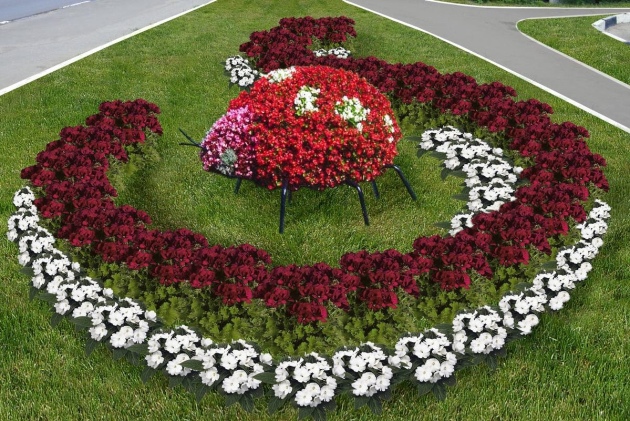
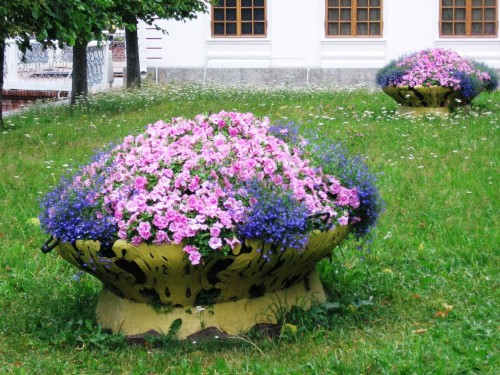
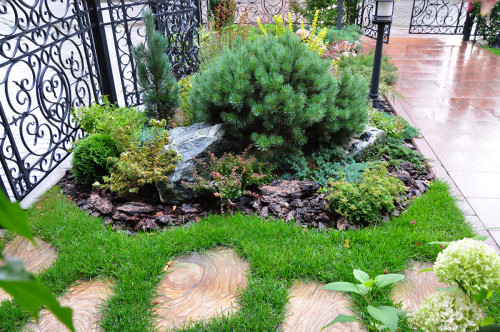
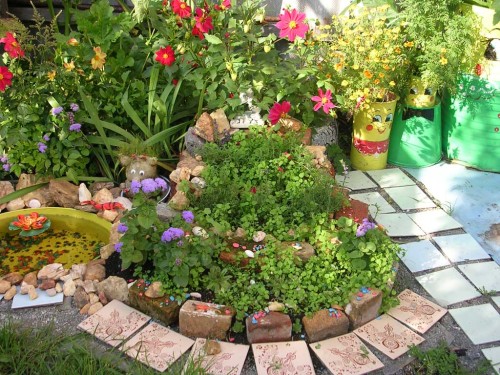

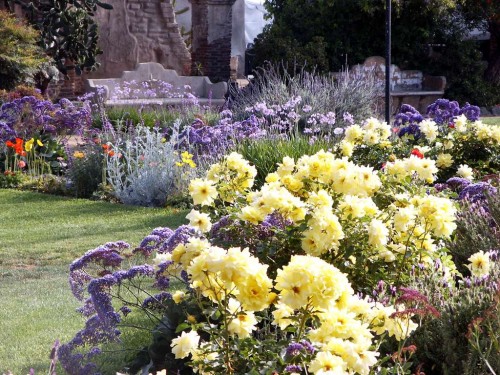











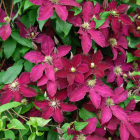
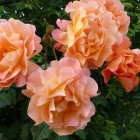
 Start a discussion ...
Start a discussion ...